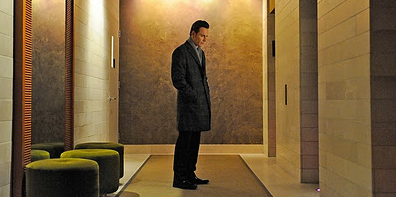Few films have been
more universally received than A
Separation, an Iranian drama from director Asghar Farhadi. The film won
multiple prizes at this year’s Berlin Film Festival, and has gone to play to
standing ovations at Telluride, Toronto, and here in New York on the festival
scene. It will also contend for the Oscars as the official selection by the
nation of Iran, surprisingly for a film that deals so bleakly with issues of
class, religion, and gender that plague Iranian society. Perhaps though, no one
can deny the power of Mr. Farhadi, who spoke about the reasons for making his
film back when the film played the New York Film Festival.
On deciding to make
the film and the entry point to the script.
When I started breaking the story I can’t point my finger to
what it was or how it was that got constructed in my head…I was already working
on another film [outside Iran] that I had planned for two years but one day, I
really felt I wanted to go back to Iran and do a film there, and that feeling
became stronger, and two days later I was back in Iran. The first image that
came to my mind was a man who had Alzheimer’s disease and that image was stuck
in my head that entire afternoon.
Working with his own
daughter, who plays the daughter in the family
Before starting to write this
script for the film, I was in a period of taking care of my daughter—taking her
to school and bringing her back every day. We were in very close company with
each other and would talk and discuss things, and I thought this could be
represented in my films. When I was writing my story, my daughter kept coming
back to my mind as the person who could be perfect for this role. I thought,
perhaps, this could be ideal, and easy for us to do so, because we had that
time period together. But as it turns out, it was a lot more difficult than I
planned on. When I asked the other actors to do certain things, they usually
accepted very fast. It was either they had seen my previous work, or out of
respect since I was the director. It was a lot more difficult with my daughter.
Whatever I asked her to do, she always had a why to ask. And it would drive me
crazy! But the good thing that happened was that [Peyman Moaadi], who plays the
father, was getting closer and closer to my daughter. They were bonding really
well. And he had another job, so my daughter would spend time in his office,
and they started getting closer together.






















